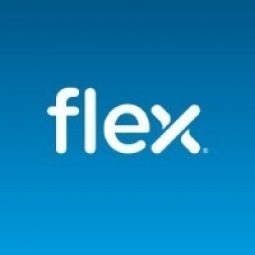Flex

Overview
|
HQ Location
United States
|
Year Founded
1969
|
Company Type
Public
|
Revenue
> $10b
|
|
Employees
10,001 - 50,000
|
Website
|
Stock Ticker
FLEX (NASDAQ)
|
Twitter Handle
|
Company Description
Flex Ltd. is an American headquartered multinational diversified manufacturing company. It is the third largest global electronics manufacturing services, original design manufacturer company by revenue, behind only Pegatron for what concerns original equipment manufacturers.

Supplier missing?
Start adding your own!
Register with your work email and create a new supplier profile for your business.
Case Studies.
Case Study
Teradata's Integrated Supply Chain: A Case Study
Teradata, a leading provider of data warehouse and analytics solutions, was facing a significant challenge in maintaining its leadership position in a highly competitive market. The company's success hinged on its ability to deliver near-perfect performance, which required a fast-paced response to customer demand, efficient production processes, and the delivery of world-class data analytics solutions within tight deadlines. Teradata's clientele included 17 of the world's top telecommunications companies, all six of the world's top airlines, and 17 of the top 20 commercial and savings banks. The company needed a fulfilment partner that could meet these high demands and help it maintain its leadership position.
Case Study
Rapid Prototyping and Market Entry: Google Chromecast's Success Story with Flex
Google's entry into the streaming media market was a strategic move to bring online media streaming to an unprecedented mass market. The challenge was to create a disruptive device that could be used in living rooms worldwide. Google partnered with Flex to take the Chromecast from idea to concept to worldwide production. The design and engineering challenges included creating a device that was small in size, competitively priced, had wireless capabilities, and could manage temperature effectively. The goal was to design a prototype of the Chromecast in just four weeks and speed up the time to market, beating competitors on both market entry and price.
Case Study
Revolutionizing Specialty Vehicle Design with IoT: A Case Study
Specialty vehicle manufacturers face a unique set of challenges due to the highly fragmented nature of their market. The design and production requirements for an ambulance, a fire truck, a snow plow, or a taxi cab are vastly different, each with its own unique external hardware that interacts with the vehicle and its controls. The gateway modules that connect this hardware to the vehicle are custom-made for each new vehicle or equipment model. This customization significantly increases the cost of design and production for specialty vehicle makers. Additionally, it also extends the time it takes to bring a specialty vehicle to market, with outfitters spending up to 18 months configuring the necessary custom hardware and software. One such manufacturer approached Flex, seeking a solution to reduce its production costs and time to market.
Case Study
Innovative Drug Delivery Device Revolutionizes Immunotherapy
In the highly competitive and rapidly evolving medical industry, companies are under constant pressure to innovate and stay ahead of the curve. One such challenge faced by a leading drug delivery provider was the delivery of immunotherapies, treatments that utilize the body's immune system to combat cancer. These therapies are notoriously difficult to inject into the human body due to their large molecular size. The company aimed to design and manufacture the world's first electromechanical device for the delivery of these life-saving immunotherapies. The device needed to integrate electrical hardware, software, and mechanical components. It also had to meet New Product Introduction (NPI) requirements, including electrical and mechanical process design, test development, line and equipment build, installation, and operational and performance qualifications.
Case Study
Achieving Cost-Effective Fuel Efficiency with Smart Airflow Controls
The automotive industry is under increasing pressure to create more fuel-efficient vehicles due to government regulations and environmentally conscious consumers. One automaker sought to improve its fuel efficiency by exploring the emerging trend of active grille shutters. These shutters, integrated into the vehicle’s front intake grille, alter the flow of air to the engine, promoting cooling when open and fuel-sparing aerodynamics when closed. However, active grille shutters are a relatively new technique in automotive design and carry challenges, particularly in safety and durability. The vendor must ensure that a grille won’t get stuck in ways that would affect vehicle performance or overheat the engine.





